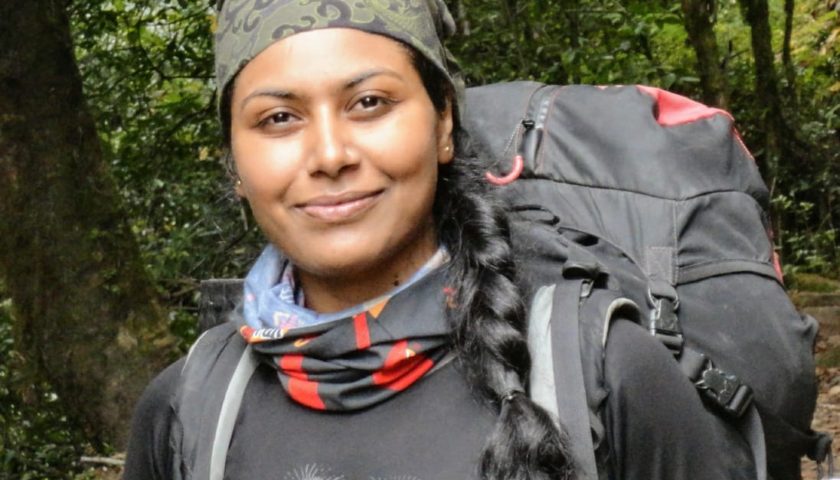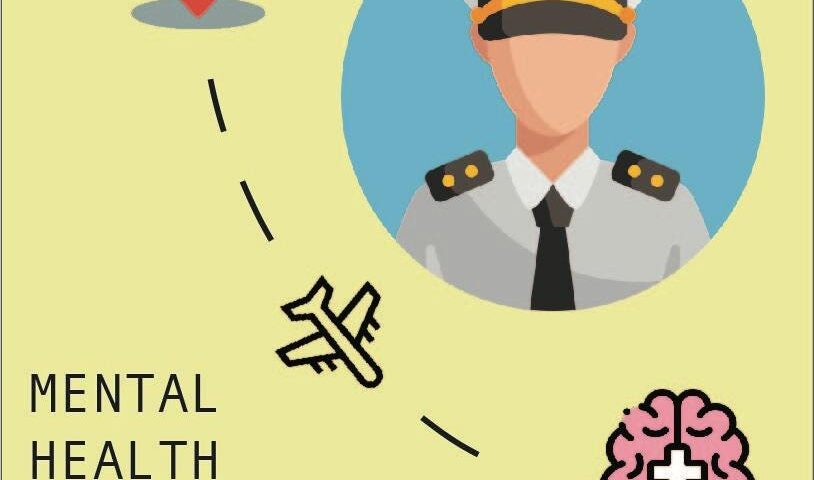Employment of women in the Indian Armed Forces is a practice that has been adopted in the last just over two and a half decades. However, as a concept, it is neither new nor novel as is evident from history which is replete with examples all over the world. Indian Air Force inducts women in all roles, including combat and support roles. As of September 2020, there were 1,875 female officers serving in the IAF, including 10 pilots and 18 navigators. The number of women joining armed forces is steadily increasing. The services have treated them at par with male counterparts with no differentiation in type and quantum of work. The women officers have lived up to the expectations and performed their duties with pride and efficiency.
It has been noted that those who have served in the defence services have a high degree of self-confidence, are self-reliant and are better equipped to cope with or face difficult situations in their second career in the civil or corporate world subsequently. Today in this post we will meet one of the women officers who retired from IAF and has led at blitzkrieg life in hills and mountains and is a role model for millions of girls of the country. Meet Sqn Ldr Toolika Rani (Retd).
Q: What motivated you to join Indian Air Force?
Ans: My fascination with the sky. Right from childhood, the sky has been a symbol of limitless, boundless existence to me. I used to gaze at the birds flying and think, “what freedom!” The myriad hues the sky adorned in the span of the day was a marvel. The sunrise, the sunset, the rain, the storms every facet of life was enacted in the sky, so for me, it became a synonym of vast opportunities and this led me to join the IAF later. The adventurous way of life in forces, the fitness levels, opportunities to travel extensively, and the comparatively equal treatment to all, regardless of gender were additional attractions.
Q. Tell our readers about minimum qualification and selection process at Service Selection Board.
Ans. The minimum qualification depends on the Branch one opts for. It is graduation in any stream for the ground services and with Physics and Mathematics for flying. For Meteorology branch, Post-Graduation is required. For the Engineering Branch, one needs to be an engineering graduate, for Accounts branch- it is Commerce.
The selection procedure consists of a written test and SSB. During SSB the candidates are examined by three examiners i.e. a Psychologist, a GTO (Ground Testing Officer) and the Interviewer. They look for various OLQs (Officer Like Qualities) i.e. Integrity, Initiative, team spirit, communication skills, courage, physical fitness etc. The medium through which these qualities are assessed is impromptu story writing, group discussion, outdoor tasks (individual as well as group tasks), situation reaction test, and the one to one interview.
Q. What do you think are the important qualities, traits or aspects a prospective candidate should have for selection?
Ans. First and foremost the leadership quality- this includes various subsections i.e. ability to take initiative, balanced decision making, clear communication, team spirit, and risk-taking capacity. The Forces work as a unit and follow a hierarchy, thus it is important for a candidate to be flexible to take on the role of a leader as well as of a follower as per the situation. Individual gratification/glorification has no place in Forces. It is fulfilling the task that is of utmost importance, with the team’s collective contribution and not individual recognition. This must be kept in mind by those aspiring for Forces. Physical fitness and mental strength are needless to mention the basic qualities to be in Forces.
“Who dares, wins. Who sweats, wins. Who plans, wins.”
Q. When a Flight Cadet comes to Academy, he/she may not have all the desired qualities. How does training, curriculum, academic syllabus prepare them for the leadership role they are expected to play?
Ans. The cadets who enter Academy already have a basic level of OLQs. However, the goal of training is to build upon them and enhance them to the level to prepare these cadets to play an effective role in the war, since the whole purpose of Armed Forces is to win the war if that happens. The curriculum is designed in such a way to ensure the development of their physical and mental strength to an optimum level. To complete the training they are forced to stretch their limits, activate every iota of strength latent in them and to perform under pressure, doing time management to the core. In short, the training prepares them to perform in adverse conditions which is the hallmark of a soldier. The activities are such that taking your buddies along becomes mandatory for your own survival, thus inculcating the heroic quality of caring for their team members as much as their own-selves which is the foundation of Armed Forces.
Q. Would you like to share some anecdote from your days while undergoing training at Academy, which changed or modulated you?
Ans. During the first half of training, one of our flying coursemates died in a plane crash. For all of us, it was a shock and a pall of gloom descended on Flight Cadets’ Mess. Everyone was quiet and demoralised and the sense of loss was palpable. But an officer came to address us and exhorted us to work with a renewed vigour in the memory of our coursemate and to win the upcoming competitions as a tribute to him. He told us that for a soldier, the loss of a buddy or any other setback doesn’t mean the abandonment of the task, but putting even harder effort into it. It taught me to never surrender to any circumstance, not even to grief.
During our senior term, as an appointment cadet, I realized how good it felt to see your juniors doing well, the same youngsters we had nurtured. Thus I imbibed the lesson that contentment and happiness come when you enable others to bring out the best in themselves. Your talent, achievements, excellence shouldn’t end at an individual level, it has to percolate to benefit others around you.
“Never give in, never give in, never, never, never, never — in nothing, great or small, large or petty— never give in except to conviction s of honour and good sense.”
Winston Churchill
Q. You returned to Academy after seven and a half years as Outdoor Training Instructor. What was your initial reaction? What is the selection criteria to be an Instructor?
Ans. I remember my appointment as an ODT Instructor from September 2013 to December 2015 as my best tenure. Before that, I had already climbed Mt. Everest, had been a part of five IAF Mountaineering Expeditions and was known for being ‘the crazy girl who keeps running’. So, I suppose for Air HQs, it was a natural progression to post me as an ODT Instructor in the Academy, but for me, it came as a pleasant surprise. I was euphoric to get hundreds of companions to run and exercise with. What better than to be paid for working out, which was my passion! I loved to be in the sports field with so many young, energetic cadets, and to facilitate their transformation into officers.
The selection criteria to be an Instructor is outstanding performance in your respective field, complemented by an aptitude for public dealing, good oratory skills, an overall enthusiastic attitude and dedication towards maintaining excellence in the service.
Q. Flight Cadets come from different backgrounds and qualifications. How did you ensure that they achieved required standards of leadership qualities, knowledge and skill?
Ans. Their backgrounds may differ in the beginning, but the most impressive feature of Forces is Uniformity that is enforced from day one. So, on a broader perspective, everyone was required to clear certain tests in physical activities (drill, cross country, swimming), academics, group tasks etc. which ensured that their hidden strength and resilience came to fore. Also, we paid individual attention to each of them through minute observation, regular interviews, appraisals and feedback, in which the background, family details, their individual inclinations, strengths and weaknesses were kept in mind. We implemented a ‘mentor and buddy system’ in which a senior cadet was assigned a junior and two juniors made buddies for each other. Thus it was a comprehensive system including training them as a group as well as individuals. The emphasis was on knitting them into a team with a common purpose where every member compliments the other with their respective skills, where different skill sets become a team asset, instilling uniformity and oneness to obliterate the effects of different backgrounds.
Q. Competing directly with your coursemates (batchmates) as well as building camaraderie at the same time, how is this impossible feat achieved during training?
Ans. Various strategies of training are enmeshed together to achieve this. There are layers in organizing the cadets; it is like a pyramid. Cadets live with different identities and each successive layer of identity is narrower than the one below, finally converging into a point where all become one. The lowest level is that of their respective Squadrons (total four in number), at which they compete with each other, then there is another identity of being a junior term cadet (which encompasses all cadets of the junior term of all Sqns) and likewise the senior cadets of all Sqns, this brings a collective identity into the picture. Then at the top comes the identity as a cadet (irrespective of the term and Sqns) – the Academy, which is the ultimate combining force. The training sessions are designed for each layer. Thus, is achieved an oxymoron of being fiercely competitive, yet forging a bond so strong that it continues lifelong.
“The most important thing I learned is that soldiers watch what their leaders do. You can give them classes and lecture them forever, but it is your personal example they will follow.”
General Colin Powell
Q. Can you share some specific instances, when you were able to assist a cadet who was facing some problem or difficulty?
Ans: To clear the drill test, three chances are given to a cadet. If he/she is still unable to pass, the cadet is re-flighted, that means he/she has to undergo the whole junior term training again with the next batch. While I was taking the drill test, one of the cadets was seemingly very nervous and not able to perform even the basic moves. I called him nearer and asked what was wrong. Initially, he was hesitant but on my exhortation, he opened up and said that he had no confidence in himself as he had already failed twice, it was his last chance and all of his coursemates had already cleared the test that means he only lacked the ability to perform well. Moreover, he said everybody had the opinion that he wouldn’t be able to clear it. I could discern that more than lack of drill skills, it was his low confidence that was hampering his performance. So, I asked him to tell me all the achievements he had since his childhood, small and big ones both. As he went along, I asked him how many candidates were there in his SSB batch amongst whom he had been selected by the SSB. And reminded him that if the SSB had faith in him, that means he has the ability to complete the training and become an officer. I gave him another day, asked him to practice in front of the mirror and appear the next day for the test. Next day I was proud to see him marching well enough to clear his test. There were many more such instances.
Q. With time and evolution of technology, training pattern keeps changing. What changes can be made to make the training more productive as well as effective?
Ans. Training must suit the changing warfare landscape. Our weapons and methods of fighting are getting increasingly dependent on technology. In future, it would be a combination of AI (Artificial Intelligence) equipped machine and humans fighting the war together. For example, India is already incorporating a comprehensive Border Management plan on the western border. Cyberwarfare, space warfare, theatre commands are going to decide the military superiority of a nation. Therefore, training institutes must also evolve from imparting mainly conventional warfare training to tech-based training to simulate the real-time scenario of future warfare. Also, there is a need for enhanced inter-services interaction during training since no arm of the military can fight in isolation. Technology can thus be used in form of simulators, providing exposure to cyber/space warfare through virtual reality devices, and as communication devices to increase interoperability between services. Routine tasks such as academic assessment can be assigned to AI-equipped machines, so that Instructors may devote more time to the cadets. The Defence Ministry had appointed N. Chandrashekaran Committee to recommend the use of AI in Military. A study of that may be useful for devising requisite training curriculum to prepare officers for high-tech warfare.
“The truth is that you always know the right thing to do. The tough part is doing it.”
General Norman Schwarzkopf

About our Guest: Sqn Ldr Toolika Rani (Retd) was commissioned in IAF in Dec 2005 in Administration Branch. She served for ten years as an ATC officer and Outdoor Training Instructor in Air Force Academy. An adventure enthusiast, she has done 23 mountaineering and trekking expeditions all around the world and holds the distinction of being the first woman from U.P. to climb Mt. Everest in 2012 and the first Indian woman to climb Asia’s highest volcano Mt. Damavand. She has been felicitated with 8 awards including Rani Laxmibai Veerta Puruskar, FICCI FLO Outstanding Global Woman Award etc. She has delivered 50 motivational talks across India, and is a writer, poet and research scholar, doing PhD on mountaineering (Sherpas of Nepal).
Related article: Women voices in military aviation. Click here to read.



